Decoding Chinese Menu Items: Essential Food Vocabulary
Ever find yourself puzzled by a Chinese menu filled with unfamiliar characters and exotic-sounding dishes? You're not alone. While navigating these menus can be challenging, it's also an exciting gateway to one of the world's most diverse and delicious cuisines.
Understanding key Chinese food vocabulary is like having a secret decoder for menus. It not only boosts your ordering confidence but also unlocks a world of new culinary experiences. Say goodbye to sticking with the same familiar dishes – it's time to explore the rich tapestry of flavors and textures Chinese cuisine offers.
This guide will walk you through essential Chinese food vocabulary, from cooking methods and ingredients to popular dishes and street foods. We'll also share tips for ordering, empowering you to step out of your comfort zone.
Whether you're a food enthusiast, a traveler planning a trip to China, or someone looking to elevate their local Chinese restaurant experience, this guide is your key to unlocking the delicious world of Chinese cuisine.
Common Cooking Methods
Understanding common cooking methods is crucial when decoding Chinese menu items. These techniques give you a clue about a dish's texture and flavor profile. Here are eight essential cooking methods you'll frequently encounter:

-
炒 (chǎo) - Stir-fry: Quick cooking in a wok over high heat.
Example: 青椒炒牛肉 (qīngjiāo chǎo niúròu) - Stir-fried beef with green peppers.
-
煮 (zhǔ) - Boil: Cooking food in liquid. They are used for soups, noodles, and dumplings.
Example: 水饺 (shuǐjiǎo) - Boiled dumplings.
-
蒸 (zhēng) - Steam: Cooking with steam to preserve flavors and nutrients. Common for fish and dim sum.
Example: 清蒸鱼 (qīngzhēng yú) - Steamed fish.
-
烤 (kǎo) - Roast/Bake: Cooking in an oven or over fire.
Example: 北京烤鸭 (běijīng kǎoyā) - Peking roast duck.
-
炖 (dùn) - Stew: Slow-cooking in liquid for tender, flavorful dishes.
Example: 炖牛肉 (dùn niúròu) - Beef stew.
-
烧 (shāo) - Braise/Simmer: Searing then slow-cooking in liquid, creating rich flavors.
Example: 红烧肉 (hóngshāo ròu) - Red-braised pork belly.
-
煎 (jiān) - Pan-fry: Cooking in a small amount of oil in a pan.
Example: 煎饺 (jiān jiǎo) - Pan-fried dumplings.
-
炸 (zhà) - Deep-fry: Submerging food in hot oil for a crispy exterior.
Example: 炸春卷 (zhà chūnjuǎn) - Deep-fried spring rolls.
Learning these methods will give you a good idea of what to expect from a dish. For instance, 炒 (chǎo) suggests a quick-cooked dish with fresh, crisp ingredients, while 炖 (dùn) or 烧 (shāo) indicate rich, well-developed flavors from slow cooking.
Essential Ingredients
Familiarizing yourself with common Chinese ingredients will help you understand menu descriptions better. Here are some key ingredients you'll often encounter:
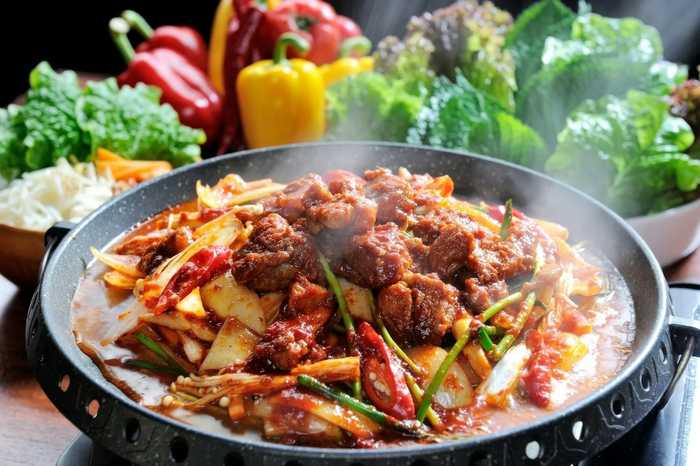
-
肉 (ròu) - Meat: Often refers to pork by default. Specific meats include:
-
猪肉 (zhūròu) - Pork
-
鸡肉 (jīròu) - Chicken
-
牛肉 (niúròu) – Beef
-
羊肉 (yángròu) - Lamb/Mutton
-
香肠 (xiāngcháng) - Chinese sausage
-
腊肉 (làròu) - Cured meat, often pork, similar to bacon
-
-
鱼 (yú) - Fish: A staple in many Chinese dishes, especially in coastal regions.
-
虾 (xiā) - Shrimp: Common in stir-fries and dumpling fillings.
-
豆腐 (dòufu) - Tofu: Versatile ingredient used in many vegetarian and meat dishes.
-
蔬菜 (shūcài) – Vegetables. Some common ones include:
-
白菜 (báicài) - Chinese cabbage
-
青椒 (qīngjiāo) - Green pepper
-
蘑菇 (mógū) - Mushroom
-
土豆 (tǔdòu) - Potato
-
西红柿 (xīhóngshì) - Tomato
-
茄子 (qiézi) - Eggplant
-
黄瓜 (huángguā) - Cucumber
-
-
面 (miàn) - Noodles: Come in various types, shapes, and sizes.
-
米饭 (mǐfàn) - Rice: The staple grain in most parts of China.
-
蛋 (dàn) - Egg: Used in many dishes, from fried rice to soup.
-
大蒜 (dàsuàn) - Garlic: A fundamental flavoring in Chinese cooking.
-
姜 (jiāng) - Ginger: Often used with garlic as a flavor base.
-
葱 (cōng) - Scallion/Green onion: Commonly used for both flavor and garnish.
It's worth pointing out that when you see 肉 (ròu) alone on a menu typically refers to pork unless specified otherwise. Also, many dishes combine several of these ingredients, so recognizing them will help you understand the composition of a dish.
Flavors and Seasonings
Chinese cuisine is known for its complex and balanced flavors. Here are some key taste descriptors and seasonings you might encounter on a menu:
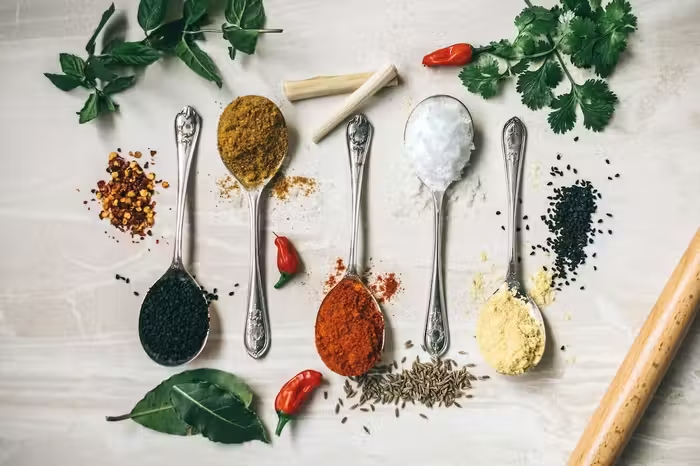
-
辣 (là) - Spicy: Indicates heat from chili peppers or peppercorns.
-
酸 (suān) - Sour: Often from vinegar or pickled ingredients.
-
甜 (tián) - Sweet: Can be from added sugar or natural sweetness of ingredients.
-
咸 (xián) - Salty: Usually from salt or soy sauce.
-
鲜 (xiān) - Umami/Savory: A rich, meaty flavor often enhanced by MSG or natural glutamates.
-
酱油 (jiàngyóu) - Soy sauce: A fundamental seasoning in Chinese cooking.
-
醋 (cù) - Vinegar: Adds tanginess and balances flavors.
-
花椒 (huājiāo) - Sichuan peppercorn: Creates a unique numbing sensation.
-
五香 (wǔxiāng) - Five-spice: A blend of star anise, cloves, cinnamon, Sichuan peppercorn, and fennel seeds.
-
芝麻油 (zhīmayóu) / 香油 (xiāngyóu) / 麻油 (máyóu) - Sesame oil: Used for its strong, nutty aroma.
Understanding these flavor profiles and seasonings will help you anticipate the taste of a dish and choose according to your preferences.
Popular Dishes and Their Names
Knowing some popular Chinese dishes can be incredibly helpful when navigating a menu. Here are ten well-known dishes you might encounter:
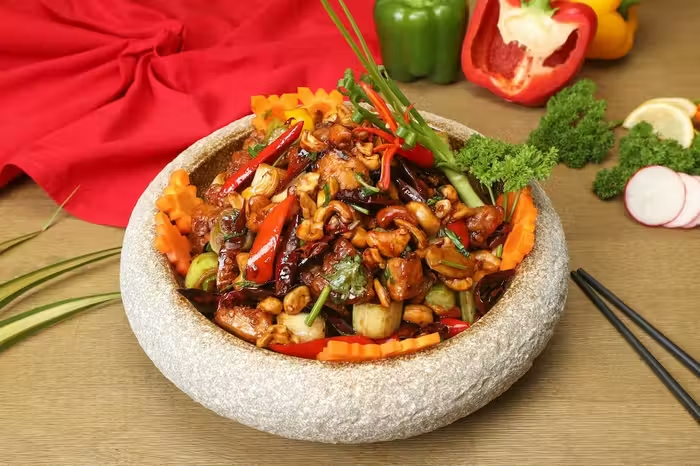
-
宫保鸡丁 (gōngbǎo jīdīng) - Kung Pao Chicken: Diced chicken stir-fried with peanuts, vegetables, and chili peppers.
-
麻婆豆腐 (mápó dòufu) - Mapo Tofu: Soft tofu in a spicy sauce with minced meat, usually pork.
-
鱼香肉丝 (yúxiāng ròusī) - Yu Xiang Pork: Shredded pork in a sweet and sour garlic sauce. Despite the name, it doesn't contain fish.
-
蛋炒饭 (dàn chǎo fàn) - Egg Fried Rice: Rice stir-fried with eggs and often includes vegetables or meat.
-
火锅 (huǒguō) - Hot Pot: A communal dish where diners cook various ingredients in a simmering pot of broth at the table.
-
番茄炒蛋 (fānqié chǎo dàn) - Tomato and Egg Stir-fry: A home-style dish of scrambled eggs with tomatoes.
-
红烧肉 (hóngshāo ròu) - Red Braised Pork: Pork belly braised in a mixture of soy sauce, sugar, and spices until tender.
-
北京烤鸭 (běijīng kǎoyā) - Peking Duck: Famous dish of roasted duck served with thin pancakes, scallions, and hoisin sauce.
-
水煮肉片 (shuǐzhǔ ròupiàn) - Boiled Sliced Pork: Despite the name, it's a spicy Sichuan dish with sliced pork and vegetables in a flavorful broth.
-
糖醋里脊 (tángcù lǐjí) - Sweet and Sour Pork: Crispy fried pork pieces in a tangy sweet and sour sauce.
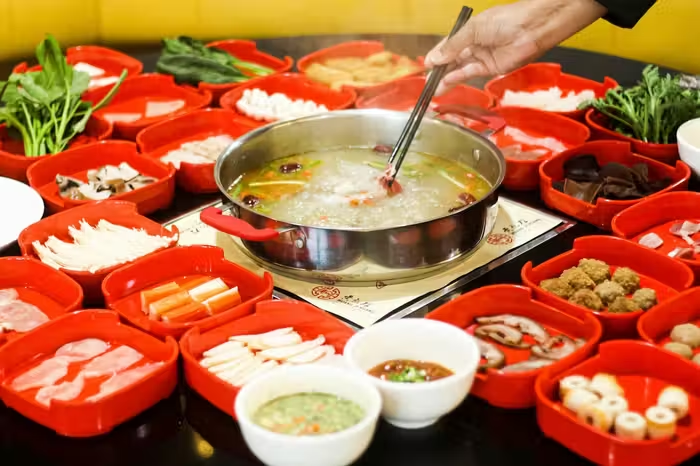
Keep in mind that regional variations of these dishes exist, and the exact preparation may differ depending on the restaurant or location.
Common Chinese Foods and Snacks
Chinese cuisine extends far beyond restaurant menus. Here are some common staple foods and popular street snacks you might encounter:
Staple Foods
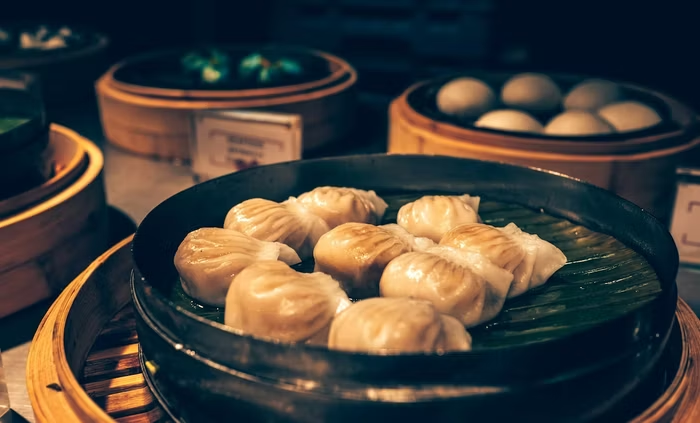
-
饺子 (jiǎozi) - Dumplings: Filled parcels of dough, usually boiled but sometimes pan-fried or steamed.
-
包子 (bāozi) - Steamed Buns: Fluffy steamed buns with various fillings, both savory and sweet.
-
馒头 (mántou) - Steamed Bread: Plain steamed buns, often served as a staple in place of rice.
-
馄饨 (húntun) / 抄手 (chāoshǒu) - Wonton: Small dumplings usually served in soup.
-
面条 (miàntiáo) - Noodles: Come in many varieties, served in soup or stir-fried.
-
米粉 (mǐfěn) - Rice Noodles: Thin noodles made from rice flour, common in southern Chinese cuisine.
-
汤圆 (tāngyuán) - Glutinous Rice Balls: Sweet or savory filled balls in soup, traditionally eaten during the Lantern Festival.
Popular Street Foods
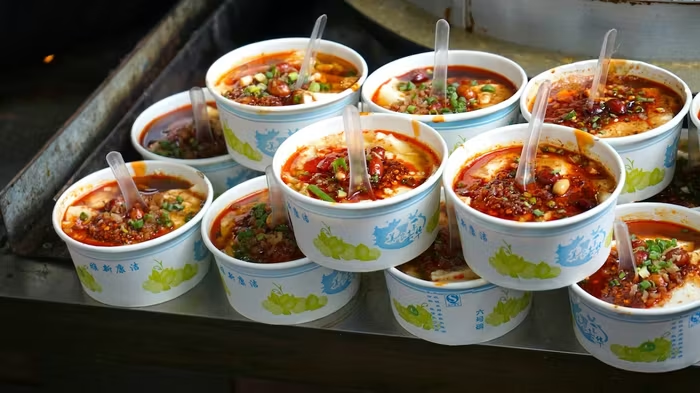
-
油条 (yóutiáo) - Chinese Cruller: Deep-fried dough stick, often eaten for breakfast with soy milk.
-
煎饼果子 (jiānbing guǒzi) - Chinese Crepe: Thin pancake with egg, often filled with crispy wonton skin and sauce.
-
羊肉串 (yángròu chuàn) - Lamb Skewers: Spiced lamb pieces grilled on skewers.
-
凉粉 (liángfěn) / 凉面 (liángmiàn) - Cold Noodles: Refreshing dishes of cold noodles in a savory sauce.
-
春卷 (chūnjuǎn) - Spring Rolls: Crispy rolled appetizers filled with vegetables and sometimes meat.
-
肠粉 (chángfěn) - Rice Noodle Rolls: Steamed rice noodle sheets often filled with shrimp, beef, or other ingredients.
-
肉夹馍 (ròujiāmó) - Chinese Hamburger: Flatbread filled with stewed meat, popular in Northern China.
-
麻辣烫 (málà tàng) - Spicy Hot Pot: A street food version of hot pot where skewered ingredients are cooked in spicy broth.
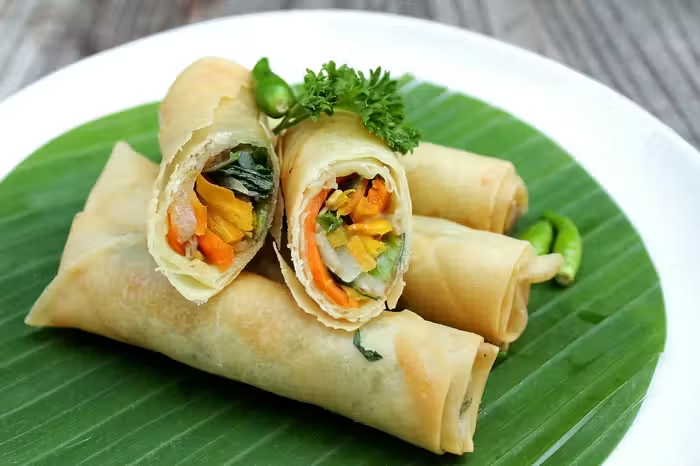
Festival Foods
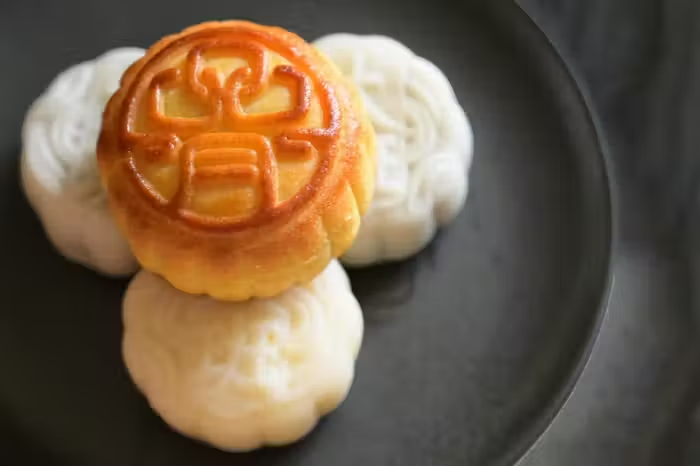
-
粽子 (zòngzi) - Sticky Rice Dumplings: Glutinous rice with various fillings wrapped in bamboo leaves, traditionally eaten during the Dragon Boat Festival.
-
月饼 (yuèbing) - Moon cakes: Dense pastries with sweet fillings, traditionally eaten during the Mid-Autumn Festival.
-
元宵 (yuánxiāo) / 汤圆 (tāngyuán) - Sweet Rice Balls: Glutinous rice balls with sweet fillings, eaten during the Lantern Festival. (Note: 汤圆 is listed in both sections as it's both a staple and festival food)
-
年糕 (niángāo) - New Year's Cake: Sweet or savory glutinous rice cake, traditionally eaten during Chinese New Year.
These foods form an integral part of Chinese culinary culture. While you might not always find them in restaurants, they're worth trying if you have the opportunity, especially when visiting China or areas with large Chinese communities or during traditional Chinese festivals.
Tips for Ordering
Now that you're familiar with common Chinese cooking methods, ingredients, and dishes, here are some tips to help you navigate Chinese menus with confidence:
-
Look for familiar characters
Even if you can't read the entire menu, recognizing key characters for ingredients or cooking methods can give you a good idea of what a dish contains.
-
Ask for recommendations
Don't hesitate to ask your server for suggestions. You can ask "什么好吃?" (shénme hǎo chī?) which means “What's good to eat?”
-
Use technology
Translation apps can be helpful but be aware that they might not always capture the nuances of dish names. Picture menus, if available, can also be very useful.
-
Be adventurous
Try dishes you haven't heard of before. Chinese cuisine is vast and diverse, and you might discover a new favorite.
-
Consider balance
A typical Chinese meal includes a variety of flavors, textures, and nutrients. Try ordering dishes with different main ingredients and cooking methods.
-
Learn some basic phrases:
-
"不要太辣" (bú yào tài là) - "Not too spicy, please"
-
"有推荐的菜吗?" (yǒu tuījiàn de cài ma?) - "Do you have any recommended dishes?"
-
"这个菜里有什么?" (zhège cài lǐ yǒu shénme?) - “What's in this dish?”
-
Don't be afraid to specify
If you have dietary restrictions or preferences, most restaurants will be happy to accommodate you. Learn how to communicate these in Chinese if possible.
Every dining experience is an opportunity to learn more about Chinese cuisine. Enjoy the process of discovery!
Your Chinese Menu Adventure Begins Here
Congratulations! You've now equipped yourself with essential vocabulary and insights to navigate Chinese menus with greater confidence. Let's recap some key points:
-
Understanding common cooking methods like 炒 (chǎo, stir-fry) and 蒸 (zhēng, steam) helps you anticipate how a dish is prepared.
-
Recognizing essential ingredients such as 鸡肉 (jīròu, chicken) and 豆腐 (dòufu, tofu) allows you to identify the main components of a dish.
-
Familiarity with flavor descriptors like 辣 (là, spicy) and 酸 (suān, sour) helps you choose dishes that suit your taste preferences.
-
Knowing popular dishes gives you reliable options when trying a new restaurant.
-
Being aware of common staple foods, street snacks, and festival foods broadens your understanding of Chinese culinary culture.
This guide is just the beginning of your culinary journey. Chinese cuisine is incredibly diverse, with countless regional specialties and local variations waiting to be discovered. Each meal offers a new opportunity to expand your culinary horizons.
Don't hesitate to step out of your comfort zone. Try unfamiliar dishes, ask about ingredients or preparation methods, and embrace the adventure of exploring one of the world's most fascinating cuisines.
The next time you're faced with a Chinese menu, take a deep breath and dive in with enthusiasm. Your delicious adventure into Chinese cuisine starts now!